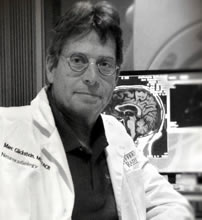Inadequate research exists regarding testing of a ventricular assist device (VAD) for susceptibility to radiation damage. Specifically, minimal data are available to radiation oncologists prescribing treatment plans for patients with an implanted VAD. As the number of implanted devices increases, patients requiring radiation at tissue sites near or at the device will increase. The purpose of this study is to provide the first analysis of radiation effects of proton beams on VADs. Five left VAD (LVAD) pumps (HeartWare Inc., Miami Lakes, FL) were exposed to proton beam radiation at a calibrated dose rate of 5 Gy/min up to a cumulative dose of 70 Gy. The Heart- Ware LVAD pump recorded parameters including power (W), speed (revolutions/min), and estimated flow (L/min). Analysis of collected data after each irradiation found no deviation in pump parameters from baseline values. The HeartWare LVAD pump exhibited no change in device function when directly irradiated by a high energy proton beam. Secondary neutron fluence created in the proton beam during irradiation had no effect on external components including the system controller and batteries powering the HeartWare LVAD. ASAIO Journal 2012;58:597-600.
The HeartWare Inc. pump has no electronics in it and contains only one moving part. The moving impeller is hydrodynamically suspended inside through a combination of passive magnets. When the impeller rotates, blades force the blood to flow in the area of the heart requiring assistance. Significant improvements in design functionality and miniaturization of mechanical circulatory support systems, including the left ventricular assist device (LVAD), have improved morbidity, mortality, and the quality of life for patients with heart failure. 1-3 Approximately, 15-20% of patients with lung cancer have tumors that can be treated with surgery combined with other therapies such as radiation. Another 30-50% of patients with lung cancer have locally advanced tumors that require a combined treatment regimen that includes radiation therapy. Because of the proximity of the lungs to several critical organs in the body, it is challenging to deliver an adequate dose of radiation to a cancerous tumor while sparing nearby normal tissues. Proton beam radiation therapy provides an advantage for many patients with lung cancer due to unique beam characteristics. The growing awareness and availability of clinical high energy proton beams are changing the radiation treatment paradigm.
As the number of patients receiving VAD implantation expands with improved outcomes and quality of life enhancement, it is important to ensure reliable device functionality when exposed to this cancer therapy. Task group no. 34 of the American Association of Physicists in Medicine referenced the significance of radiation damage information to pacemakers.4 More recent studies for modern devices are now found in literature.5,6 Significant improvements in the technology of cardiac apparatus with respect to radiation tolerance have been addressed by various research groups.7-11 Still, most literature addresses mainly x-ray beam radiation, not proton beams, and devices such as the VAD are not designed with radiation hardening in mind. Previous work from some of the investigators concluded no interaction exists between a VAD and medical x-ray particle accelerator.12 As of the submission date of this article, there is no research published on the effect of proton beam damage to cardiac devices, let alone for a VAD.
Here we report the findings of an in vitro study completed to determine any changes in device functionality of an LVAD pump (HeartWare Inc., Miami Lakes, FL) when directly irradiated by high energy therapeutic proton beams used for the treatment of cancer.13-15 Results from this testing will assist radiation oncologists and medical physicists in the understanding of any known sensitivities the HeartWare LVAD has to incident particle radiation. The HeartWare LVAD pump is a continuous flow VAD implanted in patients to provide assistance to heart failure symptoms via circulatory support. The pump is directly inserted into the patient's failing ventricle in the pericardial space and is driven by a patient-worn controller and power source (ambulatory battery sources or alternating current/direct current [DC] power) as part of the HeartWare Ventricular Assist System.16 The HeartWare LVAD is currently approved for use outside the United States and has completed clinical trial enrollment of the Food and Drug Administration and is awaiting approval for sale inside the United States.
Materials and Methods
. . .Continue to read rest of article (PDF).
Michael Gossman, MS, DABR, RSO, is a Board Certified Qualified Expert Medical Physicist - Currently the Chief Medical Physicist & RSO of Radiation Oncology in Ashland, KY - a Medical Consultant to the U.S. Nuclear Regulatory Commission (U.S. NRC) - and an Accreditation Site Reviewer for the American College of Radiation Oncology (ACRO). He is the highest ranking scientist in the medical community. His expertise involves the safe, effective and precise delivery of radiation to achieve the therapeutic result prescribed in patient care by radiation oncologists.
©Copyright - All Rights Reserved
DO NOT REPRODUCE WITHOUT WRITTEN PERMISSION BY AUTHOR.










